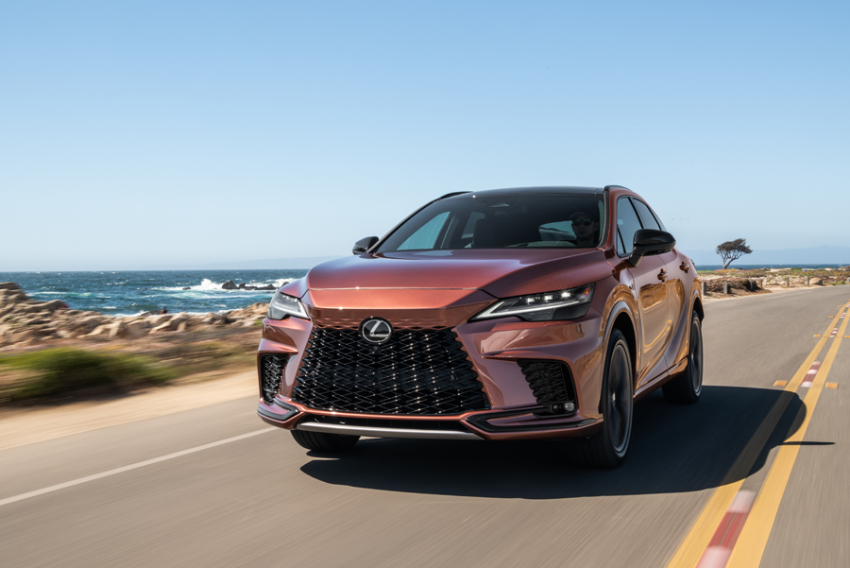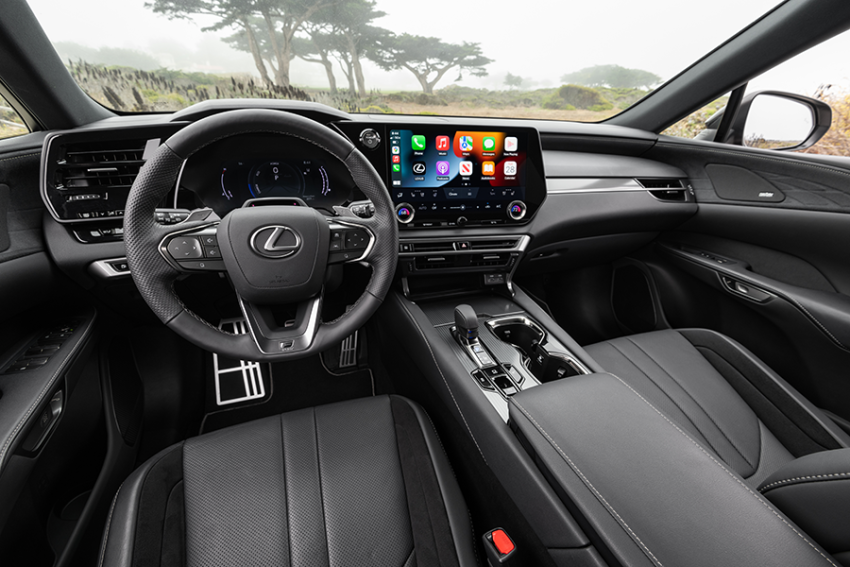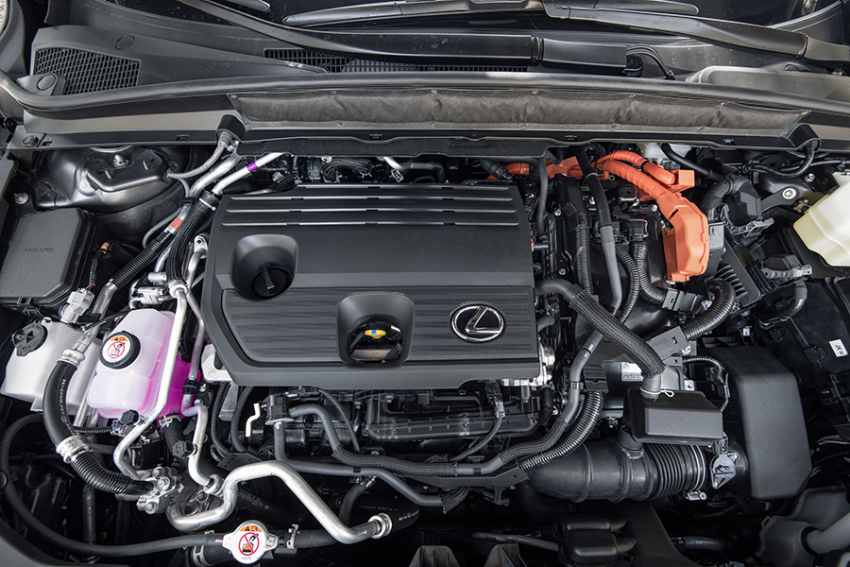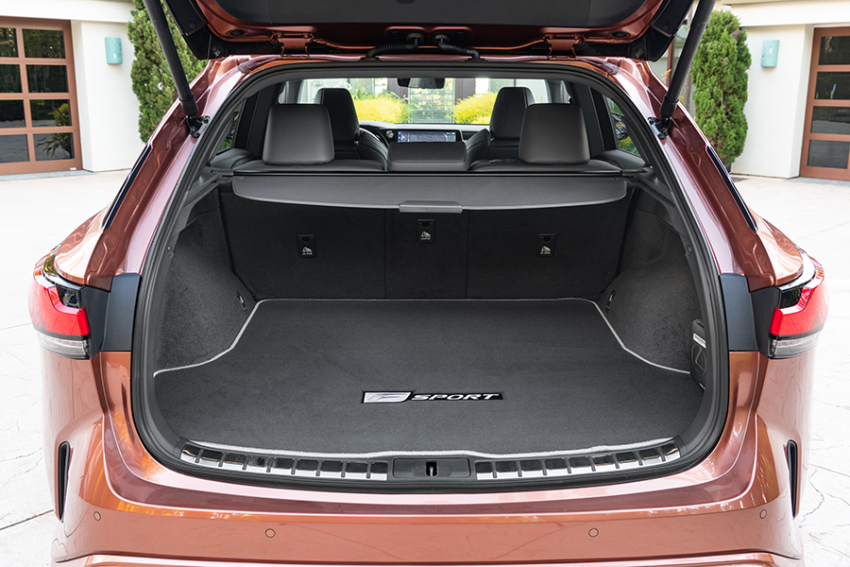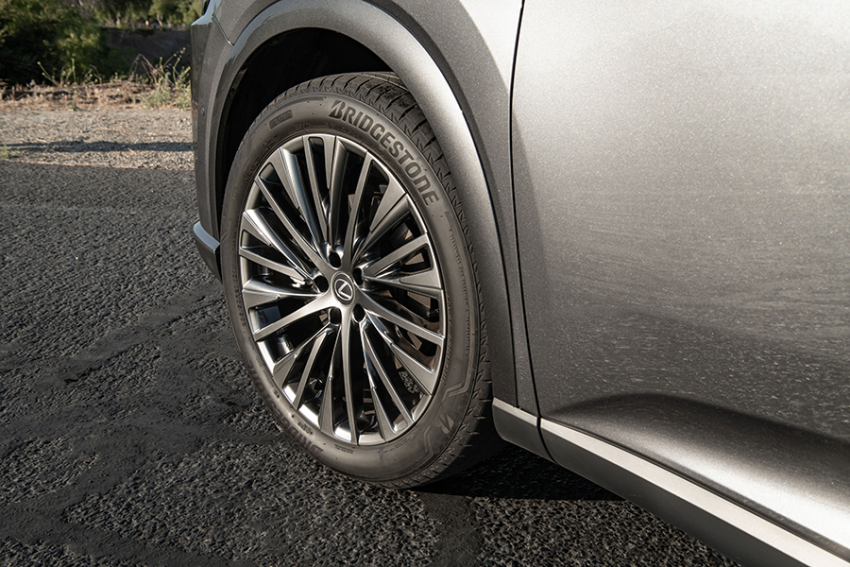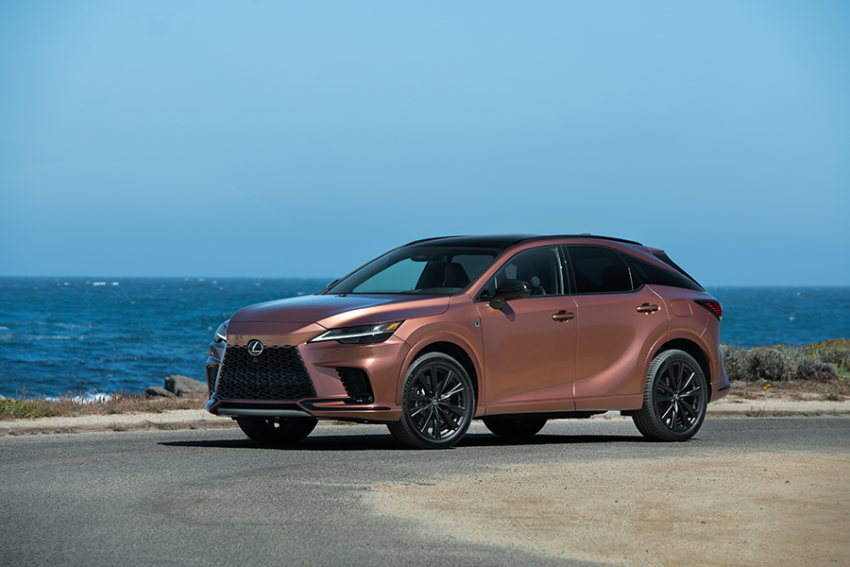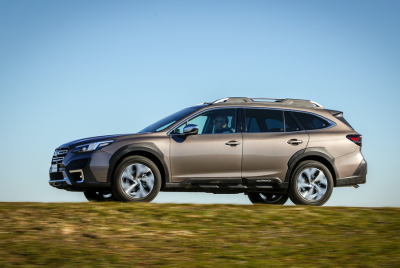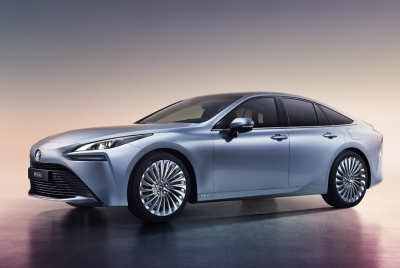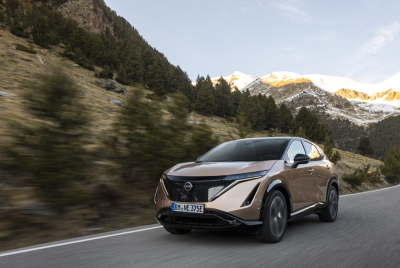Undoubtedly, the name says it all: American-proof luxury and quality. Since 1989 - the year of its foundation - Lexus (with typical Japanese pragmatism, Luxury Export United States) has been representing premium vehicles of the Toyota group, designed with the intention of contrasting, mainly on American soil, the most popular European top cars. And given its popularity, crossing the Atlantic was the obvious consequence. Thirty-five years down the road, the Japanese brand remains true to its mission by introducing, at the end of 2022, the fifth generation of its most successful sport utility car, the iconic RX, which has sold an impressive 3.5 million units since its debut in 1998.
Same size different cars
The dimensions do not change, not so for everything else. In fact, the external dimensions remain unchanged at 4.89 metres in length, similar to the previous models, although the structure has been revised, with a wheelbase lengthened to 2.85 m, track widths increased by 15 mm at the front and 45 mm at the rear, rear overhang reduced by 6 cm and overall height of almost 1.7 metres. The structural basis for the new RX is Toyota's GA-K platform, previously introduced on the new Lexus NX and which has been redesigned to have an additional cross-member and suspension reinforcements. The result is greater rigidity and handling that fully reflects the brand's recognisable dynamic quality, facilitated by a reduced weight, achieved by replacing several steel elements, such as doors and tailgate, with aluminium and composite materials. The variable mass (unladen) now stands between 1960 and 2240 kg. Well before the dynamics, the sporty qualities can be recognised at a glance, thanks to a design that in Japan is called 'Next Chapter', introduced with the latest generation of its sister NX and characterised by an hourglass shape, underlined by the new stylish front grille which features tapered light clusters with LED technology.
The contoured sides, the sloping pillars, the conspicuous spoiler, not to mention wide, profiled wheel arches able to accommodate wheels with 19- and 21-inch alloy wheels add to the RX’s sporty looks. The aggressive F Sport version includes specially designed bumpers and additional black steel door mouldings. In line with the motto 'less is more', the interior space lacks superfluous details, focusing on spaciousness with clean, linear surfaces. The dashboard is no exception, featuring a 14" central touchscreen with HD graphics, among the largest in its category, an instrument cluster with head-up display, programmable in three different views, a multifunction steering wheel with Shiftmatic paddle for manual shifting (E-CVT with shifter or Direct4 automatic) and a central tunnel with a discreet knob for managing the transmission. Comfort is guaranteed by two contoured front seats, with leather or imitation leather upholstery and electronic position adjustment, as well as a rear seat with tilt-adjustable backrest. The load capacity of the luggage compartment remains unchanged at 612 litres (461 litres at headlining height), free of the battery pack housed under the rear seat and cooled by a quieter air circuit. Comfort is complemented by tri-zone climate control, interior lighting that can be selected from 14 different colour themes, a refined hi-fi audio system and, of course, connectivity. Via a smartphone and on-board Data Communication Mobile, multiple functions - such as climate control activation – are accessible remotely via the Lexus Link app. The optional panoramic roof extends to the rear roofline, which can be opened at the front.
Hybrid-only in Europe
The engine options have never been so extensive, at least as far as the RX sport utility is concerned. In fact, in the latest Lexus series we find an entry level represented by the 350 h, a HEV (Hybrid Electric Vehicle) with a front electric motor powered and recharged by an internal combustion unit, a four-cylinder 2.5 litre engine capable of delivering 250 bhp, assisted by two electric motors, one per axle, powered by a 216 cell Nickel-Metal Hydride battery pack. In this configuration, the Lexus RX accelerates from 0 to 100 km/h in 7.9 seconds, with a declared average consumption between 15.1 and 15.9 km/litre, and CO2 emissions in the region of 142 g/km. Standard equipment includes e-Four electric four-wheel drive and the E-CVT automatic gearbox, also found on the RX 450h+. Also in the range is the RX 350, whose 279 hp turbocharged 2.4-litre petrol engine offers more performance than the previous 3.5-litre but reserved for Asian markets only. Likely, the RX 450h+ PHEV (Plug-in Hybrid Electric Vehicle), the first model in the series with recharging capability from a charging station, will become the most popular model in our market. The heart of the system lies in the 2.5-litre four-cylinder Atkinson cycle engine, again flanked by two electric units on both axles, here powered by a lithium-ion battery pack with 18.1 kWh of capacity, for a total output of 309 bhp. Enough to propel the car 0-100 km/h in 6.5 seconds, a top speed of 200 km/h and fuel consumption as low as 90 km/litre of fuel with CO2 emissions of between 24 and 26 g/km, as well as the option of moving over 65 kilometres in electric-only mode. Those who desire exclusive and sporty performance will find the RX 500h in F Sport + trim the crown jewel of the range, even though the internal combustion unit is sized at just 2.4 litres, turbocharged, with parallel hybrid design, capable of a 371 bhp output, with torque of 56 kgm.
All that power is managed by a six-speed automatic transmission and the innovative Direct4 system, capable of constantly balancing the driving force between the two axles, distributing from 100:0 to 20:80 between front and rear axles according to driving conditions. On this model, Nickel-Metal Hydride batteries have been preferred, as on the RX 350h, increased to 240 Volt to support the greater power of the rear 76 kW electric synchronous motor with permanent magnets and 169 Nm (40 kW and 121 Nm on the RX 350h and 450h+ respectively). Respectable performance indeed, with a top speed limited to 200 km/h (similar to the other two models), 0-100 km/h acceleration in 6.2 seconds and average consumption between 12 and 12.5 km/litre, with the possibility of short trips in EV mode. On the top of the range, the four-wheel independent suspension, with McPherson layout at the front and multilink at the rear, is flanked by an adaptive variable AVS system to ensure the best footprint at even the highest speeds. The RX 500h F Sport + also features a DRS four-wheel steering system, which acts in counter-phase at low speeds (with an angle of up to 4°) and reverses direction at high speeds, improving the response both when manoeuvring at low speed and moving at high speed. Finally, Trail Mode, the electronic four-wheel drive management system integrated with the braking system to provide the maximum possible grip in all slippery conditions. When the mechanical parts alone are not enough to guarantee control in all circumstances, a massive complex of electronic assistance kicks in. The Lexus Safety System +, boasts a pre-collision system, Proactive Driving Assist and the optional Extended Safety Package. Thanks to the 360° vision provided by the cameras and proximity sensors, there is no critical situation that the system cannot detect supporting the driver by acting swiftly on the brakes and steering to remain within strict safety parameters. There are only two options on the tyre front, which include generous 235/60 R19 tyres in the first price bracket and even more generous 235/50 R21 tyres for the more prestigious Luxury and F Sport trim.
